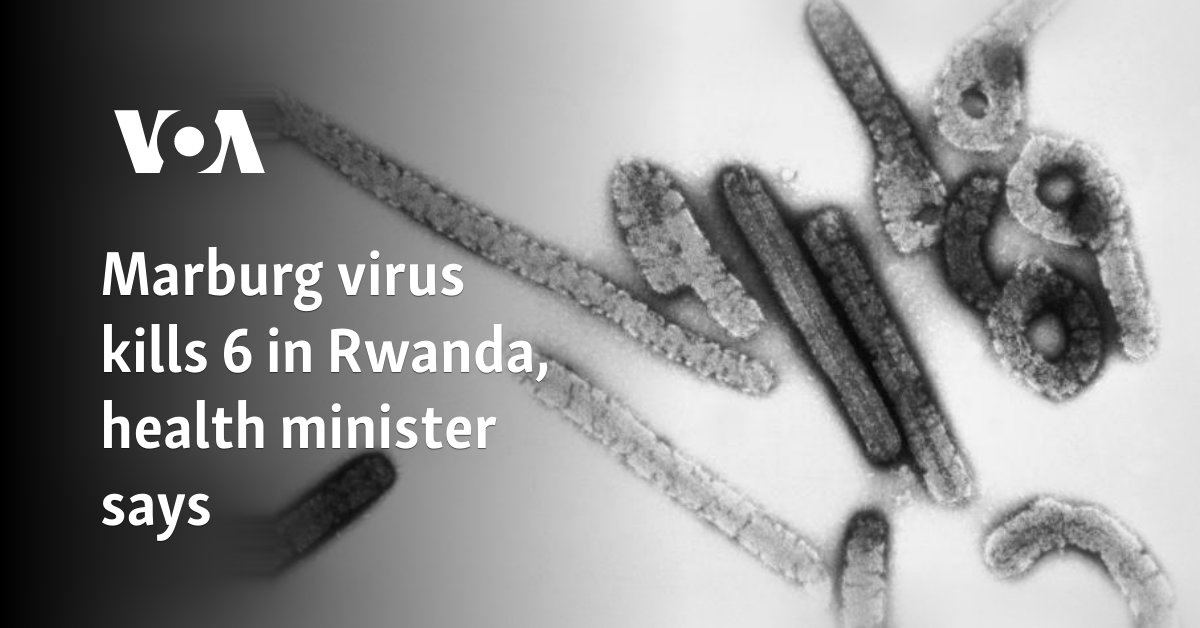Rwanda has confirmed its first outbreak of the Marburg virus with 26 cases and six deaths as of September 2024. Cases are spread across seven districts in Rwanda with 20 patients currently in isolation and receiving treatment. Health Minister Sabin Nsanzimana confirmed that many of the infected and deceased are health workers.

Also Read: FDA Approves First Novel Schizophrenia Drug in 35 Years
Marburg virus is a highly contagious hemorrhagic fever in the same family as the Ebola virus (Filoviridae family). Its name comes from the German city of Marburg, where it was first discovered in 1967 when lab workers were infected after handling green monkeys imported from Uganda.
The disease is believed to be naturally transmitted from African fruit bats, which carry the virus but do not exhibit symptoms. Humans can get infected through contact with bats or via human-to-human transmission through bodily fluids.
Marburg virus spreads through contact with the bodily fluids of infected individuals or contaminated surfaces. Human-to-human transmission can occur through blood, vomit, urine or other fluids.
The virus is not airborne. Fruit bats are suspected to be the natural reservoir of the virus and while they do not get sick from it, they can transmit it to humans and other primates.
Symptoms of the Virus Appear Suddenly and can Include:
- High fever
- Severe headache
- Muscle pain
- Nausea and vomiting
- Severe malaise
- Hemorrhagic symptoms like bleeding from orifices within a week of infection
The disease progresses leading to severe hemorrhage, multi-organ failure and in many cases, death. The virus has a fatality rate ranging from 24% to as high as 88%, depending on the strain of the virus and the quality of medical care provided.
The ministry is urging the public to remain vigilant, maintain good hygiene and report any symptoms to the Rwanda Biomedical Centre by calling their hotline (114).
The Marburg virus is a highly infectious hemorrhagic fever, closely related to the Ebola virus. It is part of the Filoviridae family, a group of viruses known for causing severe often fatal illnesses.
Marburg virus disease is characterized by severe bleeding, organ failure and a very high mortality rate. Fatality rates from past outbreaks have ranged between 24% and 88%, depending on the specific strain of the virus and the quality of healthcare provided.
The virus was first discovered in 1967 in the German city of Marburg, where workers at a laboratory became infected after handling green monkeys imported from Uganda.
Since then, the Marburg virus has caused several outbreaks particularly in African countries including Uganda and Tanzania.
Rwanda’s Health Minister, Sabin Nsanzimana announced on September 28, 2024, that six people had died from the virus and 20 were being treated.
The outbreak has affected healthcare workers particularly those working in intensive care units. Health officials are currently conducting contact tracing to locate and test individuals who may have been exposed to the virus through direct or indirect contact with infected patients.
The natural host for the Marburg virus is believed to be the African fruit bat. Bats can carry the virus without showing symptoms and transmit it to other species including primates and humans.
Once a human contracts the virus, it can spread rapidly through contact with blood or bodily fluids.
Also Read: FDA Approves FluMist for At-Home Use
Transmission occurs through direct contact with the blood, body fluids (such as saliva, sweat, urine, and vomit) or tissue of an infected person.
The virus can also be transmitted via contaminated surfaces or objects including medical equipment and clothing. Human-to-human transmission is especially common in healthcare settings, where health workers may come into contact with patients’ fluids even with the use of protective equipment.
Rwanda shares porous borders with Tanzania and Uganda both of which have reported Marburg outbreaks in the past.
Tanzania experienced Marburg cases as recently as 2023 and Uganda’s last major outbreak was in 2017.
WHO has mobilized resources to support Rwanda’s containment efforts. Sending emergency medical supplies and clinical care tools from their Emergency Response Hub in Nairobi, Kenya.
Providing expertise to reinforce the response capacity of Rwanda’s public health system. Working with national authorities to strengthen cross-border surveillance with neighboring countries like Tanzania and Uganda, which have previously experienced Marburg outbreaks.
The Marburg virus has caused several outbreaks across Africa with varying fatality rates depending on the quality of outbreak control and healthcare management.
WHO is coordinating with other African nations to set up cross-border response mechanisms to ensure detection and containment of the virus. Neighboring countries like Uganda, Tanzania and Burundi are on high alert.
Maintain hygiene practices like regular handwashing with soap and water. Avoid direct contact with the blood and bodily fluids of people showing symptoms of the Marburg virus.
Report any suspicious symptoms such as high fever, headaches, vomiting or muscle pain, to the nearest health facility or through the RBC hotline.
WHO advises that anyone in contact with confirmed Marburg cases should monitor their health closely for at least 21 days after exposure.
Also Read: Galaxy Gas: A Dangerous TikTok Trend that you Need to Know




)